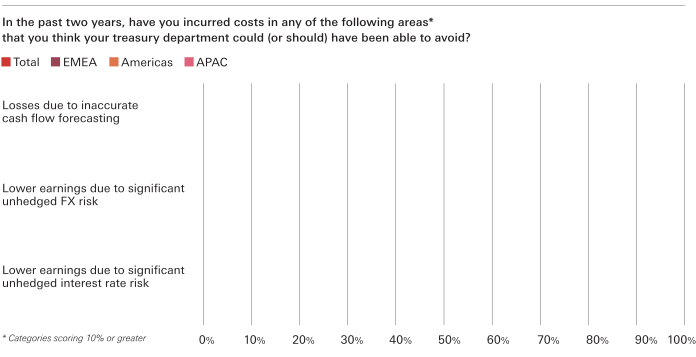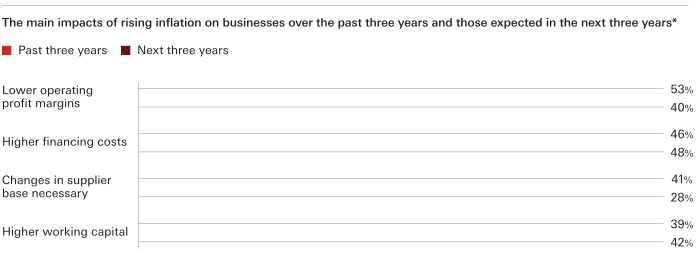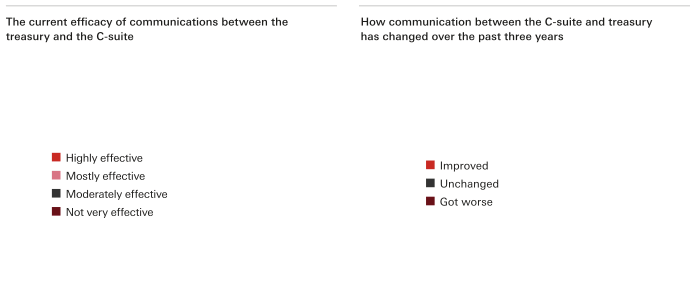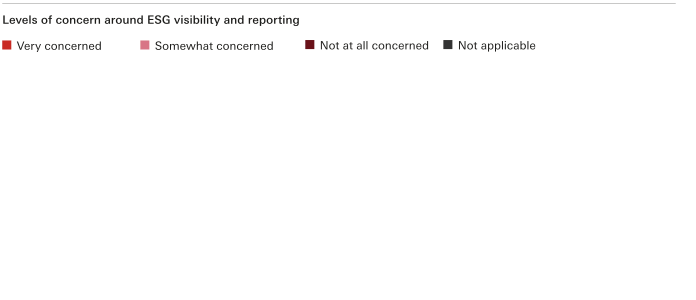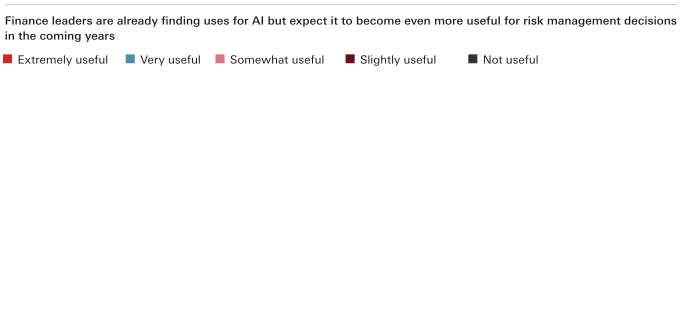A rapidly evolving world presents new challenges for treasury and finance leaders. However, it has also created new frontiers and ways of thinking. By recognising uncertainty as an inevitability and embracing adaptability, can leaders discover new opportunities for growth?

Download the report
Navigate uncertainty with insights from our Corporate Risk Management Survey 2024 report.
It’s time for the treasury to embrace uncertainty
As a follow-up to our 2021 report on corporate risk management, HSBC and Raconteur surveyed over 800 CFOs and senior treasury professionals from multinational corporates across a range of sectors from July to August 2024.
Our findings suggest that the risk management landscape is evolving at pace for the treasury function and corporate leaders. However, opportunities are arising on multiple frontiers: leaders need to navigate the uncertainty to turn it into an enabler of positive change.
Drawing on expertise from HSBC’s corporate treasury specialists, the Corporate Risk Management Survey 2024 aims to share actionable insights to help your treasury risk management function adapt. From strengthening strategic partnerships within the business to fully utilising technology and artificial intelligence (AI), this report outlines the opportunities that can help your treasury team on the path to becoming best in class.
Key findings
Forecasting challenges are key
Companies have battled disruption on multiple fronts in recent years. This has proven a tricky juggling act for finance and treasury leaders, with avoidable costs prevalent across all regions.
The vast majority (93%) of senior finance leaders say inaccurate cash flow forecasting has led to otherwise avoidable costs in the past three years. As such, half of treasurers globally say that cash flow forecasting is an area that needs further improvement.
More than half of finance leaders (52%) also expect to see AI improve their cash flow forecasting capabilities, suggesting strong expectations that AI can help resolve long-standing challenges that have undermined efficient risk management in the treasury.
The impact of inflation
Many treasury teams were caught off guard by a sharp rise in interest rates as central banks sought to tame soaring inflation.
The impact of this, according to respondents, were the dual challenges of lower operating margins (53%) and higher financing costs (46%) – both of which are challenges that finance leaders expect to persist over the next three years.
Evolving further into a strategic partner
The treasury's strategic role continues to increase, but barriers to success remain. Effective communication will be key if leaders are to fully embrace these additional responsibilities.
While more than two-thirds (68%) of senior finance leaders believe their treasury plays a key role in strategy decisions, the majority (63%) also say communication between the treasury and the C-suite is only moderately effective. Despite signs that communication has improved somewhat over the past three years, only 4% of respondents are prepared to deem it highly effective, underscoring that there is still significant room for improvement on this front.
Increased risk resilience fuels growth optimism
While the risk horizon ahead may be complicated, many finance leaders remain optimistic about their revenue growth prospects. Such optimism is fuelled in part by the fact that many firms can lean into their learnings from recent disruptive events to enhance their resilience and embrace new opportunities.
Three in four respondents named both rising customer demands and the efficient adoption of new technologies as the most important factors to the growth of their business in the next three years. In a digital age, it’s clear that businesses need to meet the growing expectations of customers that are being driven by new technologies.
A further 52% of respondents also expect growth to be spurred by a reduction in geopolitical conflicts and trade tensions, despite opposite being observed in recent years.
Supply chain management and the impact of ESG
ESG and supply chain risk have become front of mind for many finance and treasury leaders. More than half (56%) of senior finance leaders say they are very concerned about their ability to meet ESG reporting requirements, while 69% are somewhat concerned about ESG visibility into their suppliers.
The need to abide by ESG regulations is having a significant impact. Our findings suggest an increase in the proportion of businesses anticipating cancelling supplier contracts due to ESG concerns over the next three years (27%) compared to the last three years (19%).
AI and tech shape the treasury of tomorrow
Emerging technologies are rapidly transforming the business and treasury function, as reflected by the 61% of respondents that expect AI to positively impact their business. In turn, leaders are looking to invest in innovation and enhance the risk management strategies of tomorrow.
Around one in four (24%) senior finance leaders believe AI is currently very useful for risk management decisions, yet this jumps to 49% in three years’ time. These expectations are being backed by business investment given that 95% of senior finance leaders do not consider funding to be a key challenge to the implementation of AI.
With high expectations of technological maturity in the years ahead, senior finance leaders should be proactive in embracing AI and other emerging technologies to discover new opportunities.
Conclusion
In a sign that uncertainty is now a constant reality, the key question from this year’s report follows the trend from previous editions: how can CFOs and treasurers support business growth in a rapidly changing landscape?
The Corporate Risk Management Survey 2024 shows that CFOs and treasury teams have overall responded well to recent events. However, moving forward, growth and long-term success will require more than just reacting – the treasury function and CFOs must adapt and evolve. By embedding change and uncertainty into their DNA, CFOs and treasurers can turn constant uncertainty into consistent opportunity.
This report summarises the findings from two surveys across different levels of corporate finance decision-makers, combining the view from the top with the aspirations and challenges of those at an operating level. Interviews with HSBC contributors were conducted in August 2024 and references to the market environment are reflective of this.
In mid-2024, HSBC surveyed 529 senior treasury professionals from multinational corporates across a range of sectors.
The survey was conducted in a multiple choice, online format and was open for a six-week period until 30 July 2024.
Europe, Middle East, and Africa (EMEA) provided 53% of participants, with 36% from the Asia-Pacific (APAC) region and 11% from the Americas. Some 35% of participants worked for companies that generated annual revenues of less than $1bn in their latest financial year, while 36% recorded revenues of $1-5bn, 17% recorded revenues of $5-20bn and 13% saw more than $20bn.*
In parallel, the UK-based media and research company, Raconteur, was commissioned to survey a further 300 CFOs and their equivalents (the most senior member of a finance department) from multinational corporates across a range of sectors on behalf of HSBC. Of those, 100 corporates had revenues of $250m-1bn, a further 100 had revenues of $1-10bn, and the final 100 had revenues of $10bn+. Within each of these three revenue groups, 40 respondents were located within the EMEA region, 20 within the Americas and 40 from APAC.
Useful resources
Download insights from HSBC
Contact us

Need help?
For more information, please contact your HSBC representative.


